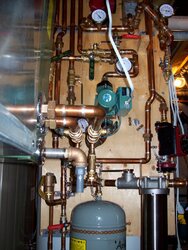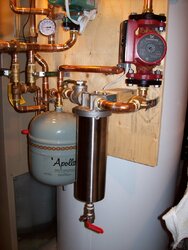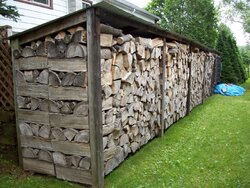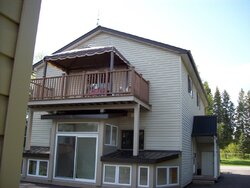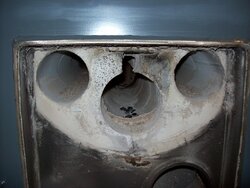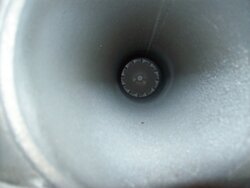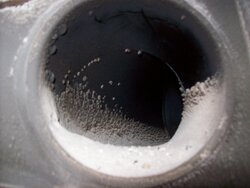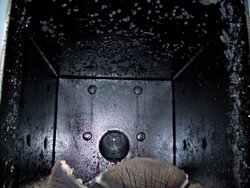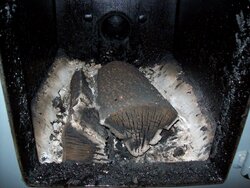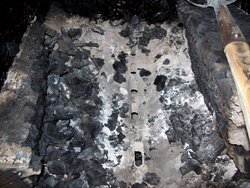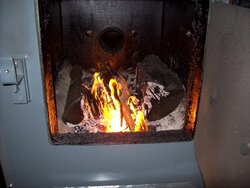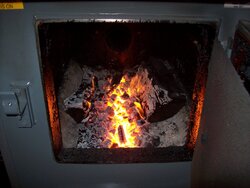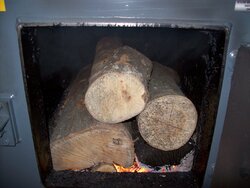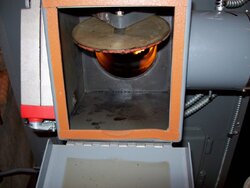Sorry guys, the house in the pic is my neighbours house. I'll post a pic of mine from the back - to show the sunroom which looses MORE heat than the entire second floor (based on 2 different professional heat loss analysis).
Front part ground floor of my house built in June 1900, back - main floor 1974, second storey 1998, sunroom 2008.
Rectangle footprint about 1100 sq ft, so above ground about 2400 sq ft (there is also a small room off the front) plus we heat the entire uninsulated basement. I have renovated and properly insulated most of the house.
It has been -11F last few days - did not really change heat demand much, maybe one extra full size split and a 4 inch round.
Standard day for me - load 2 splits in the morning with what is left from the night (usually a full, charred split). Re-load around 6 pm - usually 3 more splits with a charred split, then usually 1 split around midnight. I always have fairly intact charred pieces when re-loading, never burned right down.
So I have this cool temp gun ($30) and I'm measuring everything. Last night I got home after a 9 hour shutdown.
Boiler wall 135F, refractory 210F. Attached some pics from cold and refiring. About 5 minutes into the re-fire I took multiple readings with the red dot on the center brick hole - getting 1047 F then the gun goes crazy because temps are over its maximum. Also determined my AHS supplied boiler temp gauge is 10F low, my cheap magnetic thermometer is quite accurate from multiple readings - my cyclone temps stand - never go over 340F according to the gun.
That wood pile is basically 2 seasons burning and is always filled - we put the seasons wood in the basement in October, then refill the rack. So one year I take from the front, next from the back - all my wood is seasoned a full 2 years (2 winters) and it sits in the basement where it is dry. Definately sure my wood is dry & properly seasoned - moisture meter consistently reads 14 - 19 %. Ha ha - if you like that wood pile I should include a pic of the one in the basement - it is like artwork - next week - hahahahaha.
So this morning I go to check the WG, it is cycled off, so I use the purge timer - only the second time I have used it.
Crank it to 15, green light, rake, load 2 splits and a tiny round - there was one charred 6x6 split left from last night, close door, go out to shovel the 6 inches of snow we got last night. Come back in 40 minutes later, check WG - OMG


TEMP IS 223F ----- WTF???? Does the purge timer over ride the operating limit (set at 190F)? My high limit is set for 210F. Had to burn my underwear. And this happened with the main fan coil on and a baseboard zone. Can anyone splain that? Not intending to sound like a broken record, but this is why I will not leave it running while I am not home - just too many random events. Also had another medium explosion last night, WG cycled on after cycling off 20 minutes earlier under full fan coil load - thats the second time - running out of underwear.


